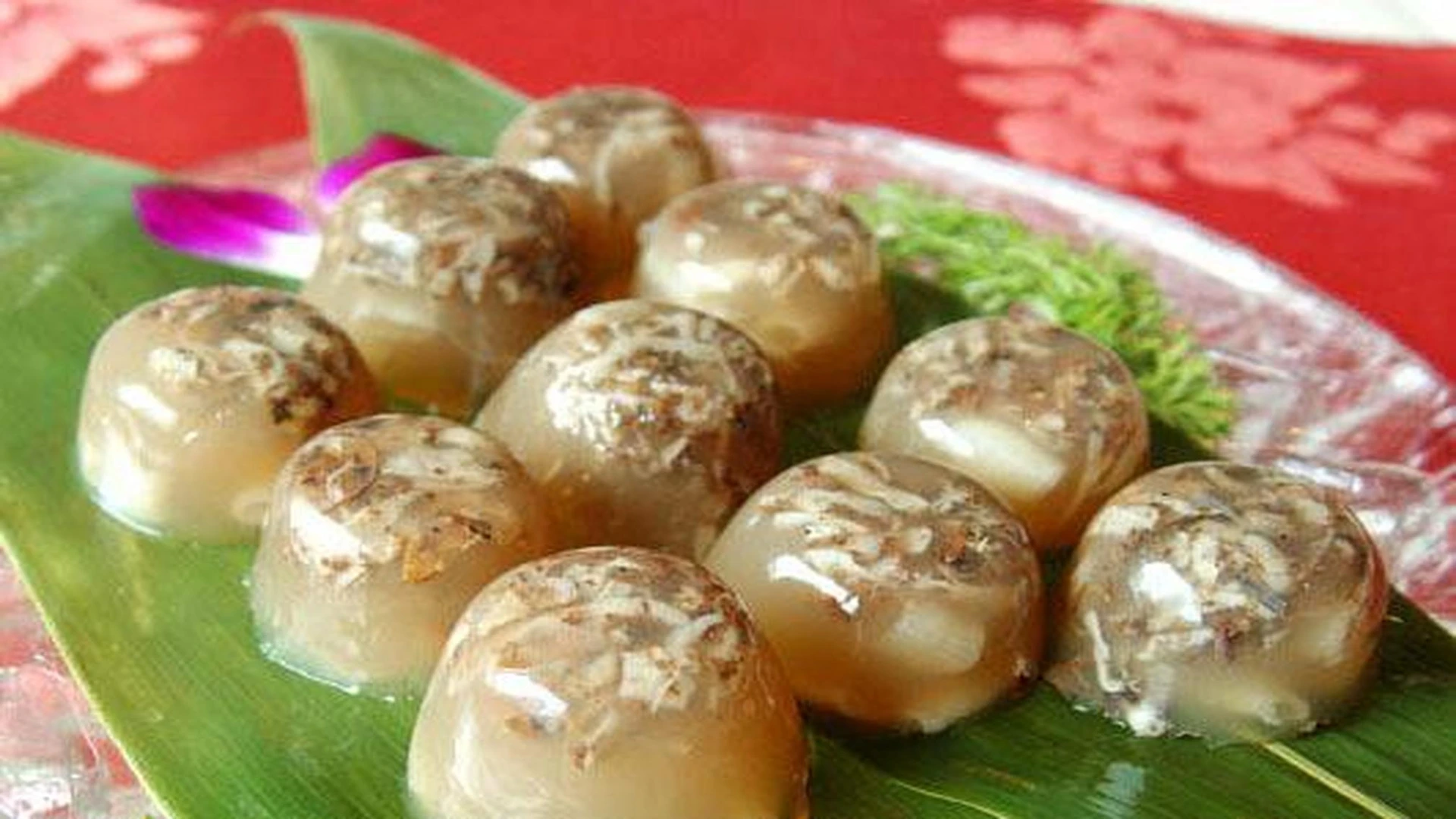The Delights of Seafood: A Culinary Journey into Xiamen’s Sea Worm Jelly
Introduction:
As a food connoisseur and practitioner, I am thrilled to delve into the world of Xiamen’s Sea Worm Jelly, a culinary treasure that has been a part of the city’s gastronomic heritage for centuries. Known for its unique texture and flavor, this dish is a testament to the ingenuity of local fishermen and their deep connection with the sea. Let’s embark on a journey to explore the origins, cultural significance, and the culinary artistry behind this distinctive dish.
Origins and Cultural Background:
The Sea Worm Jelly, or “土笋冻” in Chinese, hails from Xiamen, a coastal city in the southeastern province of Fujian, China. This dish is deeply rooted in the local fishing culture, where the sea worm, or “星虫” in Chinese, is harvested from the sandy beaches along the coast. The sea worm, scientifically known as “Amphioxus,” is a small marine worm that is considered a delicacy in this region. The dish is not only a source of sustenance but also a symbol of the city’s maritime history and the hard work of its people.
Ingredients and Preparation:
The primary ingredient in Sea Worm Jelly is the sea worm itself, which is collected and cleaned meticulously. The worms are then simmered in water with a blend of seasonings, including garlic, ginger, and a touch of vinegar to enhance the natural flavors and to remove any potential fishy taste. The mixture is allowed to simmer until the sea worms release their gelatin, which then sets into a jelly-like consistency upon cooling. This process is akin to making aspic, but with a seafood twist.
Texture and Appearance:
The Sea Worm Jelly is characterized by its unique, translucent appearance, which allows the sea worms to be visible within the jelly. The texture is firm yet tender, with a delightfully chewy and bouncy quality. When cut, the jelly reveals a clear, wobbly slice that is both visually appealing and a testament to the careful preparation process.
Culinary Uses and Dishes:
Sea Worm Jelly can be enjoyed on its own as a cold appetizer or as a component in various dishes. It is often served with a simple dipping sauce made from minced garlic and soy sauce, which complements the natural brininess of the sea worm. The jelly can also be incorporated into salads, stir-fries, or used as a topping for hot dishes, adding a unique texture and flavor to the meal.
Culinary Characteristics:
The Sea Worm Jelly is celebrated for its “Q” texture, a term used in Chinese cuisine to describe the chewy and slightly bouncy quality of certain foods. This texture is achieved through the natural gelatin released by the sea worms during cooking. The jelly’s taste is subtly sweet and savory, with a hint of the sea, which is perfectly balanced by the tangy and pungent garlic sauce.
Conclusion:
In conclusion, Xiamen’s Sea Worm Jelly is a culinary gem that showcases the region’s rich maritime culture and the innovative use of local ingredients. Its unique texture and flavor profile make it a must-try for any food lover visiting or living in this vibrant city. As a food practitioner, I am always in awe of the culinary traditions that have been passed down through generations and am excited to share the stories and flavors of these dishes with the world.
